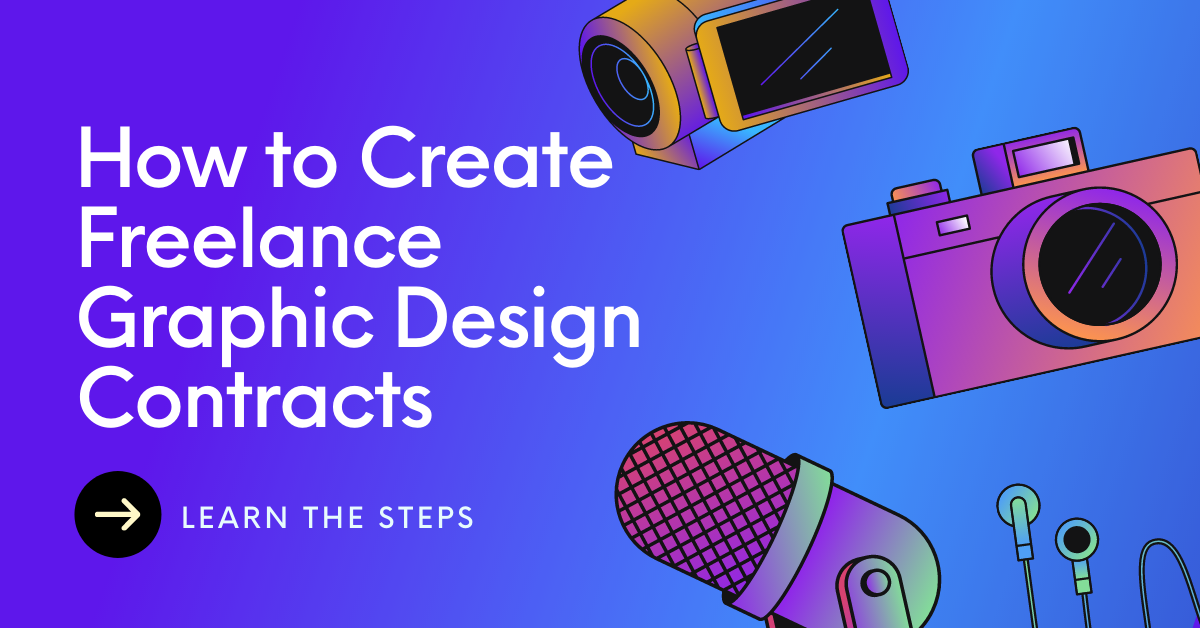The freelance graphic design industry is a huge business. Every day, more and more people are choosing to work from home as a freelancer. But before you can start making money, you need to get paid. And this is where contracts come in handy! In this blog post we will cover the basics of how to create Freelance Graphic Design Contracts that will protect both parties and ensure that payment goes through without any hitches.
What is a freelance graphic design contract?
A contract is a legally binding agreement between two parties. In the graphic design world, contracts are used to protect both you and your client by ensuring that everyone knows what they can expect from one another before work commences.
Why do you need a graphic design contract?
A contract is a valuable tool in protecting you and your client. It outlines what both parties can expect from one another, including setting out clear payment terms that protect the designer and establish the scope of work.
What should be included in a freelance graphic design contract?
Before starting this section it’s important to understand why people go through the trouble of making contracts, especially in graphic design. Contracts are meant to protect you and your client so that both parties know exactly what is expected from them before starting work on a project.
A freelance contract should include several sections:
- Project Overview
This section should include the date range of work to be performed, payment terms and details on any deliverables.
- Payment terms
are important because the contract should specify when clients are expected to pay for completed work.
- Design deliverables
Design deliverables should be clearly stated so that both parties know what to expect. For example, the contract should state whether or not you will provide a print-ready file and if your client is responsible for printing costs .
- Number of revisions
Some clients will want to make changes after they receive the initial draft, and a limit on how many revisions can be made should be included in your freelance contract.
- Copyright ownership & IP Protection
The intellectual property clause is another essential element of any design contract because it outlines who owns the work when you complete it for your client. It’s important that you retain full ownership of your work while working on a contract, and that it is clearly stated in the contract.
- Termination clause
If either party decides to end the agreement before its completion date or if one party fails to meet their obligations under said agreement, they must provide notice of termination . An example would be “X” days notice is required to be given before either party can terminate the agreement without penalty.
- Fees & Expenses clause
This section outlines how expenses work with your contract, fees for late payments or partial payment of a project , and what happens if you need to hire an assistant (and who will pay them). It should also explain any additional charges that may be incurred during the design process.
Use a contract template to get started
If you are not sure where to start with your contract, then use a template. You can find some great templates online that will save both of you time and money on legal fees.
One of the biggest advantages of adopting a prefabricated contract template is that they’ve previously been vetted by lawyers, so you can rest comfortable that you’re sending them a legally binding contract.
Conclusion
So, now you know how to create freelance graphic design contracts. But what about the other aspects of freelancing? Let Artmeet be your guide! We can help you with everything from finding clients and marketing yourself as a designer, to managing your workload and invoicing. Join today at Artmeet for free and start building an online portfolio that will land more gigs than ever before. Have any questions or want us to answer something specific? Shoot us an email – we’re always happy to chat!

